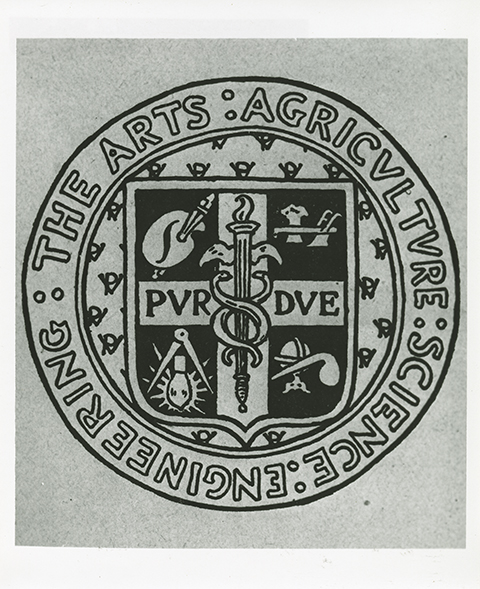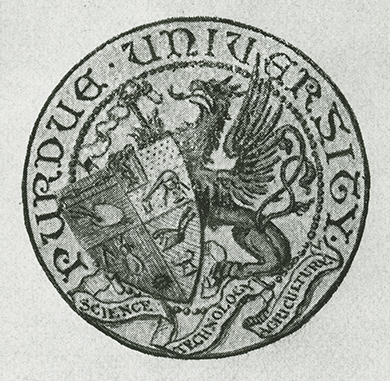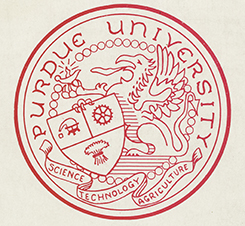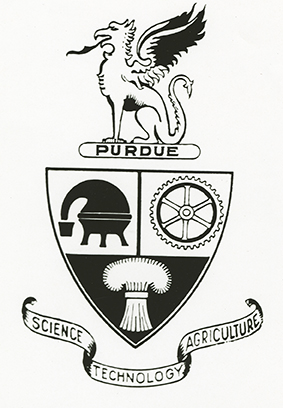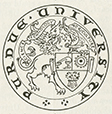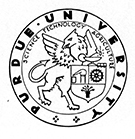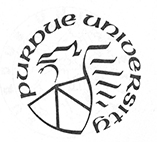Did You Know?: Purdue Seal
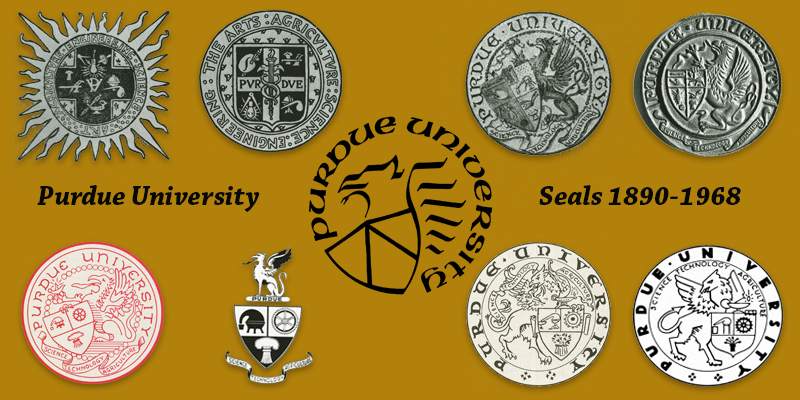
The Purdue University seal has been around for almost 130 years. The current seal, designed by Al Gowan in 1968, is used only on official University documents such as diplomas, letters of acceptance and communication from the Board of Trustees and the president.
The following describes the evolution of the seal and the important people who took part in the designs.
1890, First design
Bruce Rogers, an undergraduate student at the time, designed the first Purdue seal for the cover of the Annual Register of 1890-1891. His design emphasized the curriculum the University offered. The design was unsuitable for the letterpress printing process of the day, which showed his inexperience. The University never officially adopted the design.
1894, Second design
Bruce Rogers also drew the second Purdue seal, which first appeared on the cover of the Exponent's October 1 issue of 1894. The designed remained loyal to the original concept but was better suited for reproduction. Rogers added a caduceus to represent the new School of Pharmacy, which created a problem of too many symbols. By this time Rogers had graduated from Purdue, and in 1895 he moved to Boston.
1894, Third design
The University administration asked Abby Phelps Lytle to design the third seal while head of the art department at Purdue. She introduced the slanted shield, uncial lettering and a winged griffin. This designed was used for nearly 15 years. The intricate design, though aesthetically pleasing, was difficult to reproduce clearly.
1905, Fourth design
According to Michael Horoho's book, "The Purdue Crest: A Visual History", the fourth design was probably a study attempted by some engineering students. It was a bronze casting and was not suitable for reproduction. The printed image is a graphic rendering of the three-dimensional piece. The image appears on the cover of a photo album of campus buildings from around 1905. It may have been a stimulus for the Benjamin design, which came a few years later.
1909, Fifth design
The fifth seal was designed by Charles H. Benjamin, dean of engineering. The design first appeared in the Purdue University Catalogue of 1909-1910. The University wanted the third design simplified and selected Benjamin, who was considered to be an artist as well as an engineer, to do the job. He worked from a sketch by his daughter, Marion Woodbury. The shield was reduced in size and the symbols reduced to three. The griffin now held a Roman lamp of learning. The design was used for 60 years.
1924, Sixth design
The sixth design was a variation of the fifth design and appeared in the Semi-Centennial Alumni Record of 1924. It was probably intended to present a more printable piece, which it did. The variation separates the griffin, the shield, and the banner from their positions on the Benjamin version. This design has appeared in Memorial Union publications from time to time. The designer is unknown.
1947, Seventh design
The seventh design was by Bruce Rogers. His suggestion for this design to the president at the time, Fredrick L. Hovde, was never considered. Though Rogers' seal designs did not meet with approval, his career was internationally distinguished by his work in type and book design. Many of his original works can be found in Archives and Special Collections at Purdue.
1947, Eighth design
The eighth design, commissioned by Robert W. Babcock was an attempt to simplify the Rogers design. Babcock was the editor of Campus Copy, a University in-house publication. He printed the commissioned work along with the Rogers and Benjamin designs in the March 1947 issue of the Campus Copy to gain faculty insight. In the end, the University continued using the Benjamin design.
1968, Ninth design
The ninth and current design was designed by Al Gowan, an assistant professor of the then new school of creative arts, when he received a grant to develop a new seal. His research resulted in a more stylized design which helped him redefine the seal's concept, yet maintain a faithfulness to the calligraphic style of the Lytle seal of 1895. Gowan thought the seal should represent the three permanent aims of the university: education, research and service.
All information and photographs are from the Purdue Archives and Special Collections.
This story is based on a blog post by Mary Sego, archives processing assistant: http://blogs.lib.purdue.edu/asc/. Additional information about the seal is available in the Archives and Special Collections.


